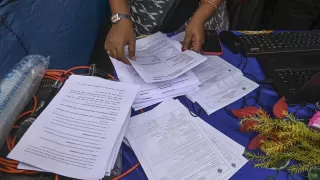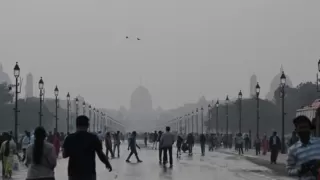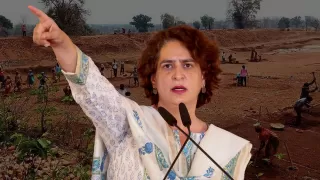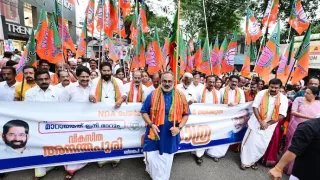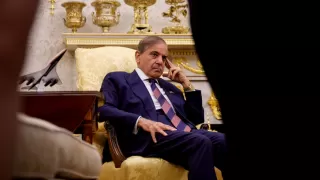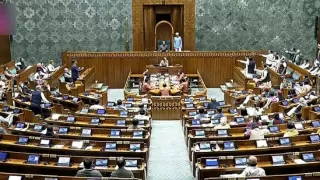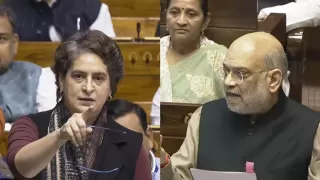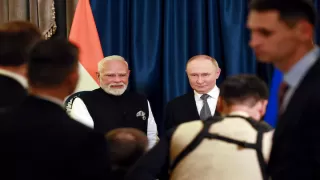In a fiery press conference that dominated the news cycle, Congress leader Rahul Gandhi leveled sweeping allegations of electoral manipulation in the recent Haryana assembly polls. He described a pattern of irregularities in the voter rolls — duplicate entries, improbable bulk registrations at single addresses, and mismatches in postal ballot tallies — all of which, he argued, pointed to a coordinated effort to subvert the will of the electorate.
At the heart of his presentation was a startling example that quickly became symbolic of his broader charge: an identical photograph appearing multiple times on the electoral rolls under different names. Gandhi said this was not an isolated clerical error but a visible manifestation of systemic duplication and mis-registration, one that demanded urgent investigation and remediation to protect the sanctity of the democratic process.
What Rahul Gandhi Presented
Rahul Gandhi laid out a narrative of alleged large-scale fraud, asserting that his team had compiled extensive data showing tens or hundreds of thousands of suspect entries. His remarks focused on three interrelated themes: the presence of duplicate voter records, suspicious concentrations of registrations at single addresses, and discrepancies between postal ballot counts and in-person voting results. Together, he said, these pointed to a deliberate effort to alter electoral outcomes.
He used slides and illustrative examples to emphasise his claims, arguing that the quantity and variety of anomalies made them implausible as random mistakes. Gandhi framed his presentation as a call to action — for the public, the courts, and institutional watchdogs to demand transparent audits and a thorough review of the voter-list management process to restore confidence in elections.
The Brazilian-Photo Example
Central to media coverage was his use of a specific example: the same photograph, reportedly a stock or widely available image, appearing repeatedly in the state’s voter lists but under different names and polling locations. In Gandhi’s telling, the identical image served as a vivid, easy-to-grasp piece of evidence that helped the public visualise what abstract claims about duplication might otherwise obscure.
Whether the photograph’s repetition represented intentional fraud, sloppy data handling, or a composite of other administrative failures, Gandhi argued that even a single such example demanded explanation. For many observers, that image became shorthand for deeper anxieties about how electoral databases are compiled, reviewed and verified.
Scale of the Allegation
Beyond the single photograph, Gandhi asserted that the problem was systemic, alleging large numbers of duplicate or otherwise invalid registrations across the state. He said his team identified multiple categories of concern: entries that appeared in more than one constituency, addresses with implausibly large numbers of registered voters, and records associated with postal ballots that did not reconcile with other tallies.
If even a fraction of the alleged anomalies were verified, Gandhi warned, the impact on tightly contested seats could be decisive. He urged that the aggregate effect of these irregularities could amount to a significant distortion of electoral outcomes and insisted that legislative and judicial mechanisms be mobilised to investigate and remedy the situation.
Reactions and Pushback
The allegations triggered immediate and polarized responses. Supporters of Gandhi’s position called for independent forensic audits of the voter rolls and renewed scrutiny of the processes used to add, delete and revise voter entries. They argued that, at minimum, transparent investigations were necessary to maintain public trust in elections.
Critics questioned the timing and presentation of the claims, asking why such discrepancies had not been formally challenged during the roll-revision phase if they were so obvious. Political opponents dismissed parts of the narrative as sensational and politically motivated, while institutional actors emphasised the need for formal legal processes, evidence-based audits and adherence to established complaint mechanisms.
Legal and Institutional Implications
Gandhi’s allegations raise complex legal and procedural questions about electoral governance. If the claims lead to formal petitions or court cases, the judiciary will need to determine whether procedural lapses rise to the level of actionable fraud and whether specific seats or results should be re-examined or invalidated. That process would likely involve forensic data analysis, witness testimony and scrutiny of the roll-revision timelines and protocols.
The Election Commission and other relevant bodies would be asked to explain oversight steps taken during roll updates, the safeguards in place to prevent duplication, and how complaints raised during revision windows were handled. The outcome of any institutional review will shape future policies on roll maintenance, verification processes and the role of political parties and civil society in monitoring roll integrity.
Broader Political Ramifications
Beyond the immediate legal questions, the controversy may reshape political narratives and campaign strategies. Opposition parties are likely to use the issue to mobilise voters and demand reforms, while incumbents and election administrators will face pressure to demonstrate transparency and procedural robustness. The debate could also influence how postal ballots, address verification and bulk registration protocols are managed in future elections.
For the general public, the episode underscores the fragility of institutional trust: even the perception of manipulation can have outsized consequences for civic confidence. Restoring that trust will depend not only on legal outcomes but on visible, credible reforms and independent verification mechanisms that make electoral rolls more auditable and transparent.
What to Watch Next
Key developments to monitor include whether formal petitions are filed in relevant courts, whether the Election Commission initiates its own review or audit, and whether independent forensic teams are engaged to examine the voter-list data. Political fallout may also include parliamentary or assembly debates, calls for special investigative committees, and renewed media scrutiny of roll-revision practices.
Ultimately, the way institutions, political actors and the judiciary respond will determine whether the controversy leads to substantive reforms or remains a contested political episode. What is clear from the press conference is that questions about voter-list integrity have moved to the centre of public debate and will shape conversations about electoral fairness for the foreseeable future.
Also Read: Zohran Mamdani Elected NYC’s First Indian-American Mayor






